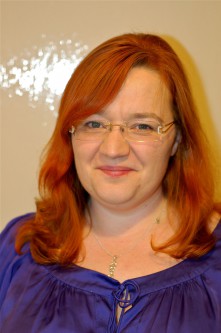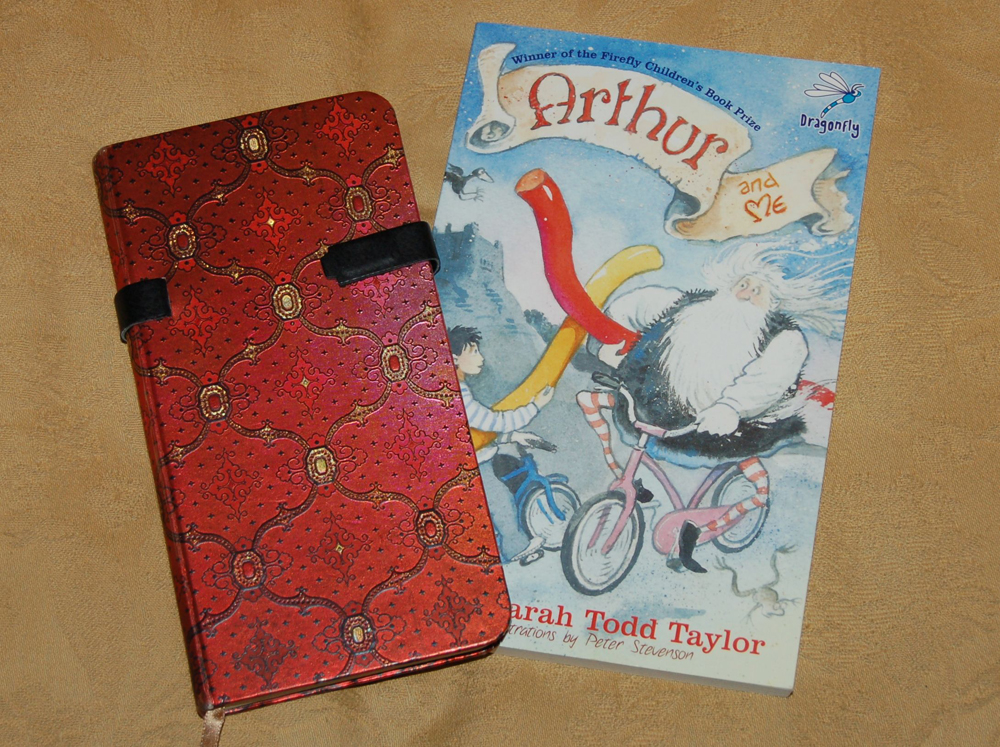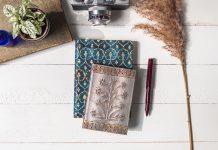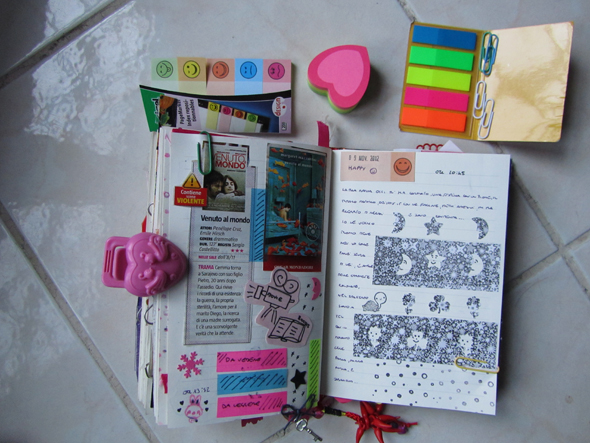 Name: Sarah Todd Taylor
Name: Sarah Todd Taylor
Age: 42
Hometown: Aberystwyth, Ceredigion, Wales
Occupation: Higher Education
Places: I have lived in Yorkshire and Wales and have visited Florence, Barcelona and Berlin. In the United Kingdom, I have stayed in Scotland, Derbyshire, the Lake District and Dartmoor. I love to stay in places where you can go walking in the countryside, and so I love Portmeirion in North Wales. It’s a wonderfully inspiring location with such a sense of fun.
Teachers/Education: I studied History in University and then went on to write a PhD on 17th Century Broadside Ballads. They are such a rich literary resource and they give a fascinating glimpse of early modern life.
Favourite Quote: “Fairy tales are more than true: Not because they tell us that dragons exist, but because they tell us that dragons can be beaten.” – Neil Gaiman, Coraline
Loves: I love fiction that comments wryly on how silly we can be as humans, such as the hilarious Mapp and Lucia novels by E.F. Benson, and anything by the sublime Barbara Pym. I’m also a bit of an Agatha Christie addict. As a children’s writer I spend a lot of time indulging in reading children’s fiction. I love a good picture book. Every word counts and you can learn so much about how to use language and the value of good rhythm from reading a picture book. In longer fiction I love books where the real world setting is shown from such an unusual view so that you feel you are inhabiting a different world (such as Katherine Rundell’s amazing Rooftoppers). I also love gothic and Victorian literature, and adore the work of Lemony Snicket and Neil Gaiman, as well as Chris Riddell’s Goth Girl series.
I love art galleries. They are such a great source of inspiration. When I was a child I used to make up stories for paintings, and even now when I see a painting I find myself wondering about the personalities that are depicted in it. Paintings are a snapshot of life, a little bit like a short story. I like to make up the rest of the story from the snapshot. I also love cats and hamsters, chocolates, glass Christmas decorations, snow globes and pens. I can’t walk past a stationery shop.
Creative Works: I have had several short stories published in anthologies, including “The Jiltmaker” in My Heart on My Sleeve – 14 stories of love from Wales, “Plumage” in Cut on the Bias (stories about women and the clothes they wear) and “Henry Tilney Attempts to Cure his Wife” in Wooing Mr Wickham: Inspired by Jane Austen’s Heroes and Villains.
My first children’s book is Arthur and Me. You can find out more about me on my blog: http://sarahtoddtaylor.wordpress.com/.
What would one find in the pages of your Paperblanks journal?
This Paperblanks journal is my prized “plotbook.” It contains the plot and the first workings out of the storylines and character studies for my first published book, Arthur and Me. I like to work out my thoughts longhand on paper first, although I do use a word processor for drafting. My plotbook comes with me at all times and I add thoughts to it and use it to scribble down ideas and work out brief paragraphs. At the moment it has the plots for four books in it. I’d be lost if it ever went missing.
I love my Paperblanks journals because the covers are so beautiful and the paper so smooth that they make writing a treat and a ritual. I love the magnetic clasp on my plotbook. It makes me feel as though I am unlocking a treasure chest every time I open it. I unclip the clasp, pause to admire the cover once more, and then I flick through to an empty page and begin work. The result is a rather messy, haphazard book that must look fairly unimpressive to anyone who sees inside it, but for me it is the beginning of my stories and when I start to flesh out an idea in my plotbook it is one of the most exciting parts of the project.
Do you have any personal philosophies you’ve come to develop about writing, art or creativity?
I believe that all of us are creative and we all tell stories. The world is full of storytellers – parents making up tales for their children, authors writing new stories for their audience, colleagues swapping yarns about what they got up to at the weekend. We don’t just exchange facts – we embroider, we build our narratives to draw out emotions in our audience. In short, we tell stories. Humans love to tell one another stories and we love to listen to them. Story is important. It is part of the lifeblood of being human.
Do you have any specific themes you refer to frequently?
I love to play with reality in my short stories. Often they are the real world, but set slightly on an angle. In “Last Night’s Dinner” (in the collection The Woman who Loved Cucumbers), I had my heroine haunted by everything she had ever eaten, whilst in “Plumage” (in the collection Cut on the Bias), I had a woman resort to increasingly desperate attempts to collect beautiful bird feathers to build herself a dress.
I think this is why I love writing for children so much. There is a wonderful freedom in being able to create new worlds, to take your imagination off in directions where you know your audience is keen to follow you. In Arthur and Me, my children’s book, I had my young hero, Tomos, wake up the entire Round Table and then have to hide them in his father’s shed. Bringing together two worlds, the real and the utterly fantastical, and yet keep it convincing and believable was a real challenge but great fun.
What or who first inspired you to make creative writing an essential part of your life?
I was lucky, in Primary School, to be taught by a lovely, inspiring lady called Mrs. Tan. She encouraged me to write and told me I had talent. As a shy, unconfident nine-year-old that was a huge encouragement. She was also the first person to teach me the value of finding your own “voice” in writing, of setting down the stories that only you can tell in your own way, not trying to copy anyone else’s. I threw myself into writing and when I was ten I won my school’s “Writer of the Year” competition.
Most of my early teen writing was about an inept king ruling over a tiny imaginary country and making a hash of things through various schemes that never quite came to anything. Writing became a dream and when I was thirteen my Dad caught me pushing the books aside in the “T” section of our local bookshop. On being asked why I apparently said, “They’re going to need some room for my books.” I was first published in the Cadbury’s Children’s Poetry competition anthology when I was sixteen, and the thrill of seeing my name in print was immense. Ever since then I’ve been scribbling away, helped by some fantastic courses and a supportive writing community in Aberystwyth.
How did you find Paperblanks?
A friend bought me a Paperblanks notebook for my birthday – the Baroque Ventaglio Marrone. With its inlaid, intricate cover, printed edge paper and metal clasp it was too lovely to be believed. When I found that our local Arts Centre was a stockist I was lost. I still tend to opt for the ones with metal or magnetic closures – there is something so exciting about the ritual of opening up a book ready to do some writing.
What sets Paperblanks apart from other journals you’ve used?
They are just so beautiful. Sometimes when I’m writing I like to close the cover and look at the design for a little inspiration. Added to that, the smoothness of the paper makes them very special and easy to write on. Ink pens don’t bleed into the paper and pencils glide easily across it.
Do you have a favourite Paperblanks design?
I love the first one I was bought, the Ventaglio Marrone, and also the Equinoxe Azure. They remind me of the feel of old library books.
Do you have any advice for aspiring writers and other creative people?
Write, write every day. Don’t wait for “the muse.” If you feel utterly uninspired, then do a writing exercise, or write a blog post instead of working on your books or poetry. Just so long as you are writing. Writing, telling stories, building worlds, is addictive, and the more you write, the more you will want to write and the less you will find yourself facing the dreaded “writer’s block.”









Very much enjoyed this blog by Sarah Taylor — It’s refreshing to hear from an author who responds in such a natural and positive way!
Absolutely! It’s always inspiring to read an author’s thoughts on writing, and to see that it truly is possible to turn your passion into a career! Sarah Taylor is a great example to learn from, because her enthusiasm for the written word really shines through.
Best,
The Paperblanks® Team